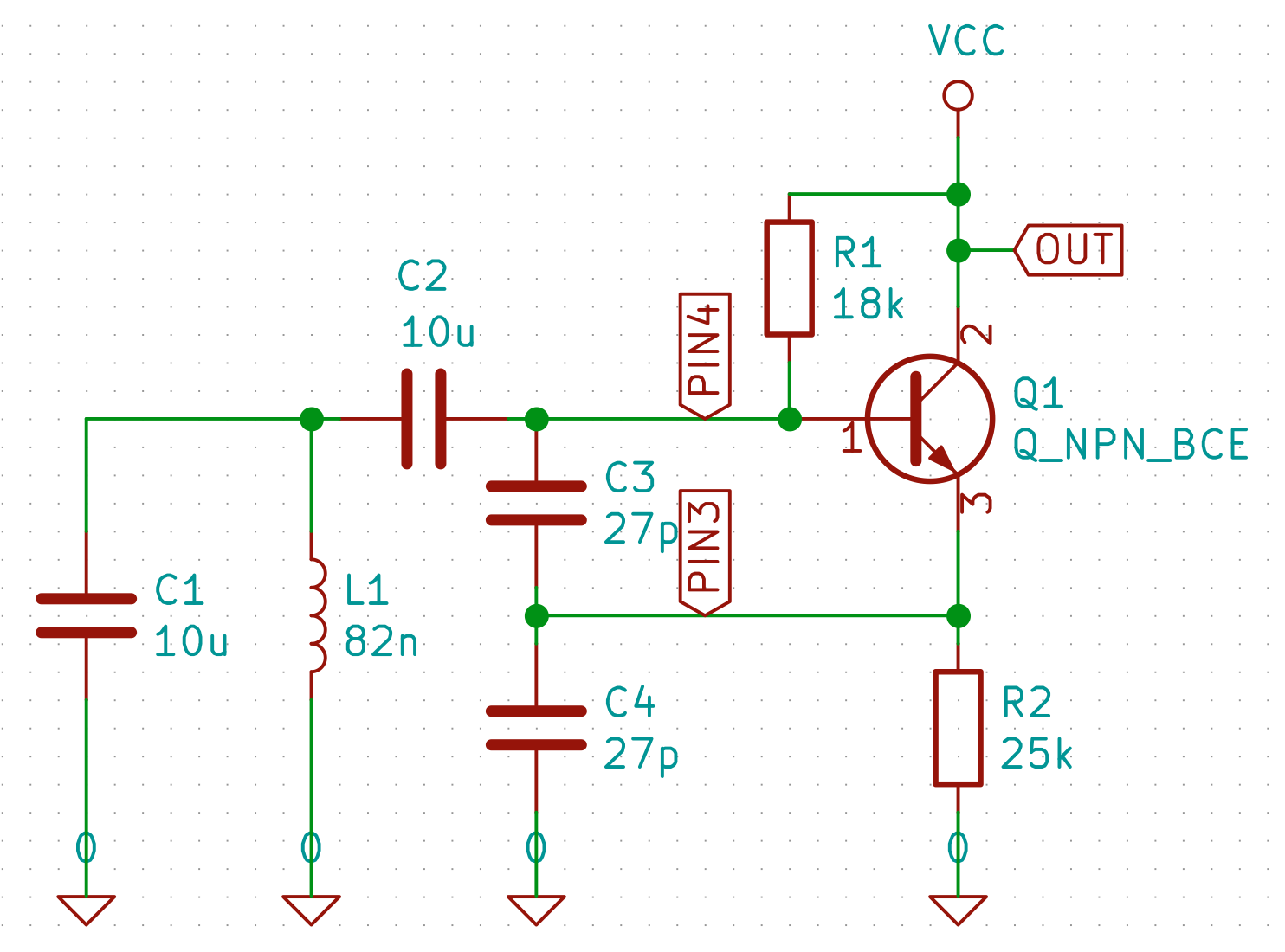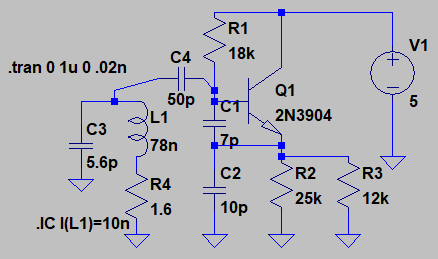I'm trying to put together a simple superhet radio, receiving at 161.75MHz (this is for AIS reception.) I've been trying to design around NXP's SA605 chip (see SA605) but I'm having a hard time figuring out what values to use for some components. My IF is 10.7MHz & the LO is 161.75 - 10.7 = 151.05MHz. I'd like to avoid using a crystal. From the docs, it seems like a Colpitts oscillator should do the trick, with L = 82uH and C = 27pF (I know this is off a little bit, but I assume I can put a trimming cap in parallel with the capacitor across pins 3 & 4 to get it right.)
From one of the application notes, it looks like I can do this fairly simply:
...but the question becomes, what values do I use for the DC blocking cap, and the one on ground? I assume the value varies based on the oscillation frequency, but I don't know where to go to calculate that.
I've also tried to simulate this in the spice simulator now embedded in KiCAD:
...using the equivalent circuit from the application note:
...but I haven't had any luck getting it to actually oscillate. Do you have any hints on getting this going?




